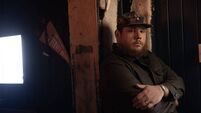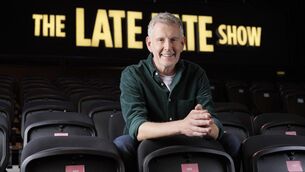Mo Laethanta Saoire: Victoria Kennefick on Divine Rapture and living next door to Brando
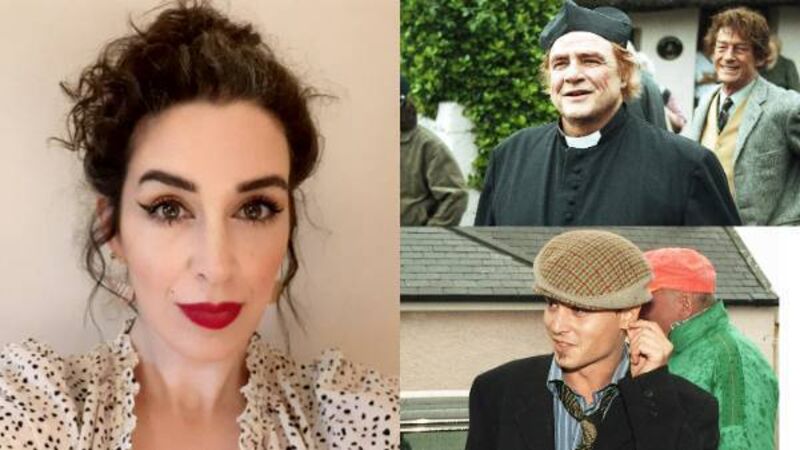
Victoria Kennefick, and right, Marlon Brando and Johnny Depp in Ballycotton for Divine Rapture.
Summer holidays as a child were honey coloured, the days long and light. I don’t remember it ever raining, and if it did it was exciting and strange to swim in the sea while drops fell, quivering on my eyelashes and dimpling the water. The constant, rhythmic flow of the waves was so soothing, relaxing before I even knew what that word meant.
There were no cars on the roads then, they were ours entirely. The sound of the lark, which I hear so rarely now, was high and clear in Ballynamona Beach. It’s sweet song the soundtrack to all those blissful, sand coated, ice-cream flavoured summers that I am sure I’ve misremembered, but it doesn’t matter. And of course, there was one summer, there always is, that burns itself into one’s subconscious brain, the neurons repeating the story to themselves over and over, because one summer something rather extraordinary happened in our small patch of coastline in East Cork.
It was the summer Marlon Brando moved in next door. Shanagarry House, the beautiful Georgian dwelling with its graceful, curved driveway and shining windows was Brando’s base for the film Divine Rapture which was being shot in the neighbouring cliff-top village of Ballycotton.
I had already seen Brando in several Sunday afternoon matinees on RTÉ, Guys and Dolls (1955) was a particular favourite of my ten-year-old self. He sings a song in the film, ‘Luck be a Lady’ which I still hum from time to time. He does a good job, though I don’t think Sinatra was too impressed. My sister and I were obsessed with the Rat Pack even calling ourselves ‘Vic’ and ‘Lou’ in terrible New York mafia accents.
Keenly aware of Brando’s legendary status as a Hollywood star, we spent our evenings sitting on our garden swings in the twilight listening to his grandchildren play on the other side of the orchard imagining what it must be like to be that famous, that iconic – amazed that he was being driven around the winding roads in a stretch limo with black curtains. We had to know more.
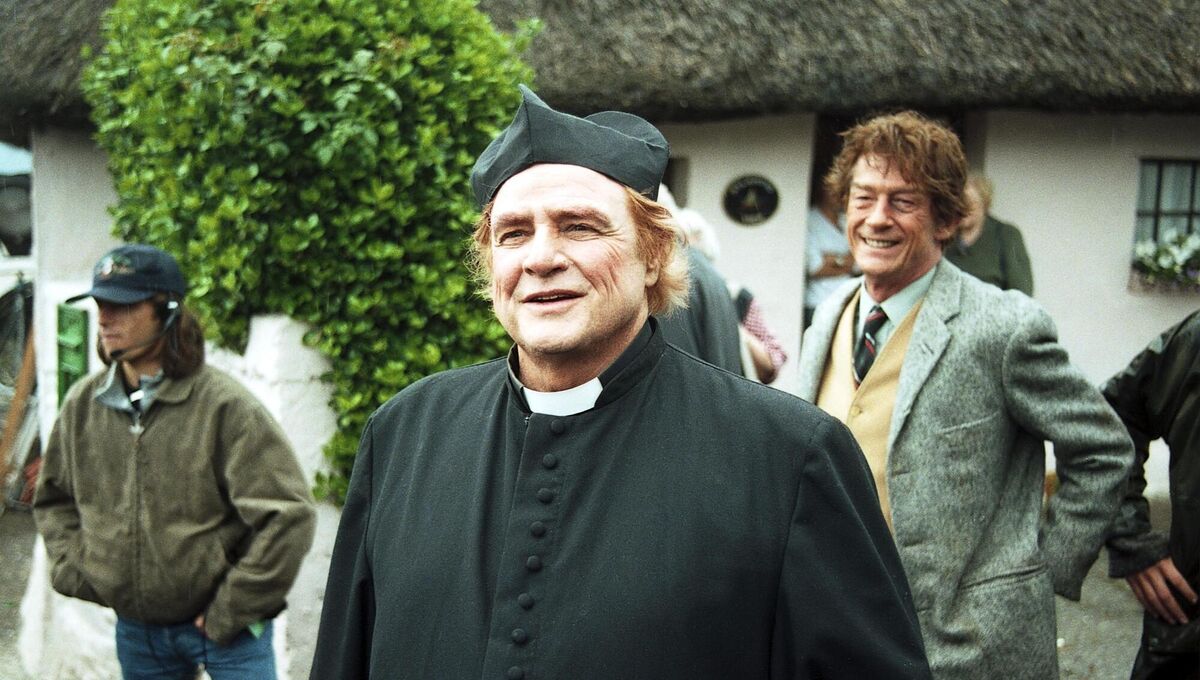
We had auditioned for a part in the film of course, as had every child from our school. We dutifully queued outside Ballycotton primary school completely clueless as to what would be asked of us. I was turned away from the registration desk immediately as being ‘too tall.’ Ouch. My sister got an opportunity to do some rudimentary Irish dancing, and our friend recited a poem. None of us were successful of course – I realised later it was mostly because we didn’t have enough freckles. For years I regretted not pencilling some on, as if that would have changed anything.
We decided to cycle to Ballycotton for the first day of filming. It felt momentous, like preparing for war. We made sandwiches and brought our drinks and an apple in our backpacks. Our mother gave us some money for sweets. She waved us off as we began our expedition, the 4.4 kms to Ballycotton. It’s a pleasant cycle though there is one big hill before the T-junction, take a left and you’re on the only road to the village, next stop the sea.
It was hot, I remember that, and we had to stop a few times to take a drink. If I close my eyes, I can still feel the coldness of the diluted orange hitting my throat, the warm fresh breeze on my face, the smell of salt, the odd bug that lodged in the side of my eye or brushed past my cheek.
When we reached the village, there so many people around, onlookers like us, but also extras and the production crew. They had arrived a few weeks before and had transformed some of the buildings to resemble a dance hall and a row of seaside cottages, or rather to look more like a Hollywood approximation of seaside cottages. We made our way to the top of the cliff where we had heard they were shooting that morning. The curve of the road gave way to the bracing horizon of Ballycotton, the lighthouse rising like the kraken out the choppy waves, its one eye closed now.
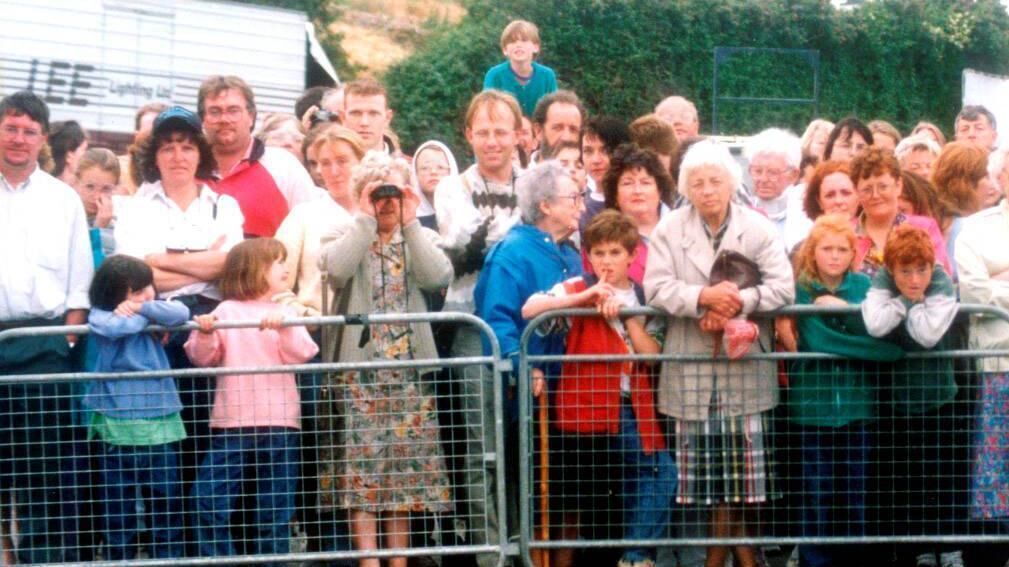
At the cliff top, we saw a crowd had gathered, and there were Marlon Brando, Johnny Depp and Debra Winger preparing to shoot a scene. Brando was dressed as a priest, or again, the Hollywood impersonation of what an Irish priest would look like. He even had a Bosco-orange wig underneath a jaunty biretta. His cassock was as black as the curious crows surveying the scene, looking for scraps. He looked like no man of God I had ever seen. Hilariously, we were supposed to believe Johnny Depp was Irish too. Even then, it seemed incongruous.
I felt a strange sensation in my chest when I looked at Brando. He and has family had been through so much in the period before filming. I didn’t know the precise details but saw the adults nodding and tutting sadly when mentioning him. I had been given a luminous pink Le Clic camera for a birthday. I remember raising it to take a picture of Brando. He looked over, attracted perhaps by the outrageously bright colour. He looked so desolate, I couldn’t press the release and lowered the camera without taking a snap.
Later, we went down the hill to stand outside the dance hall to wait for a closer look at Depp. When he came down the stairs, he looked much, much tinier than I imagined, even as a child. Again, I lifted my camera to take a picture when a bus pulled up behind us and a group of French students came streaming out, running across the road shouting, ‘Johnny! Johnny!’ in their French accents. They completely consumed him in the wave of their enthusiasm. All I could make out was his forehead with its floppy lock of dark hair above the tide. So, I took a picture of Johnny Depp’s forehead. I still have it somewhere.
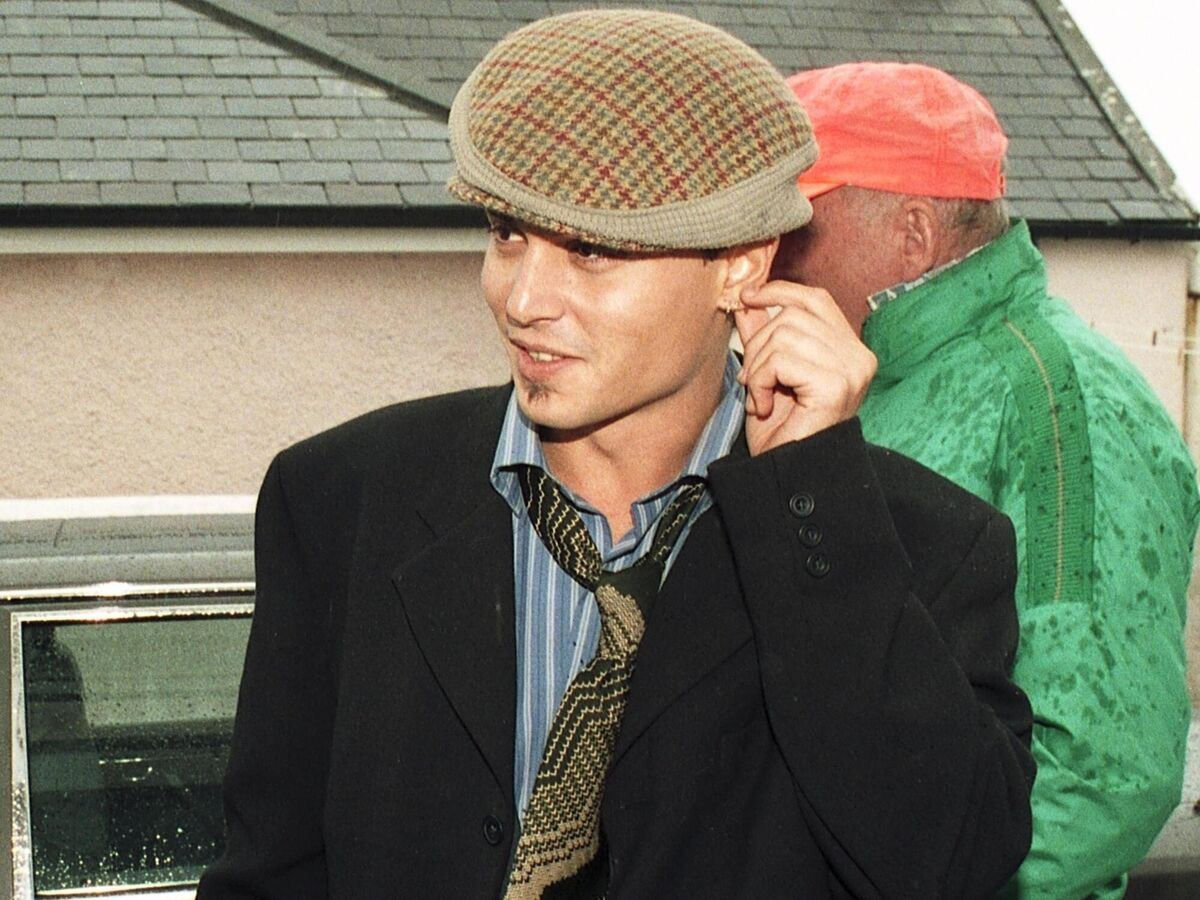
We went to watch the filming every day, a little pilgrimage to Ballycotton and a sneak peek behind the scenes of the Hollywood machine. At night, we heard from the adults that the effervescent Angeline Ball entertained punters in the local pubs singing songs from The Commitments. My Dad adored her, and we teased him mercilessly. He didn’t seem to mind. Everything was buzzing and alive. Until it was over, suddenly and devastatingly.
The money was gone, or had never been, or had been pulled. The dream was dead. Local businesses were thousands out of pocket. I heard that Brando paid them. I don’t know if this is true, but I like to think that it is. All that is left of Divine Rapture now is a mock-up trailer on YouTube. I didn’t know it was there until I started to write this, remembering those glamourous few weeks when East Cork felt like the centre of the universe. Ballycotton looks so beautiful in the footage. A star turn that never was.
I was reminded of this ill-fated movie when filming for Joy Ride (2022) took place in my new home of Tralee last summer when my sister and her family were visiting. The stars’ caravans were parked outside the back of our house. Filming took place right in front of our garden. Our lovely neighbours’ house became Olivia Colman’s character, Joy’s home. Colman was so gracious and generous. The little ones were delighted with her.
We watched the filming of the car chase scene outside – the night clear and mild, our neighbours offering trays of drinks and food. We were all so thrilled, especially after the stultifying sameness of lockdown. For a second, that fizz of nerves returned, and Hollywood was back. Joy Ride is in cinemas now and I can’t wait to see Kerry in all its glory. Everyone gets that one summer, and maybe even this time, a happy ending.
- Victoria Kennefick's debut poetry collection, Eat or We Both Starve (Carcanet, 2021), won the Seamus Heaney First Collection Poetry Prize 2022 and was awarded the Dalkey Book Festival Emerging Writer of the Year 2022. It has recently been shortlisted for the Derek Walcott Prize for Poetry 2022. In 2021, it was shortlisted for both the T.S. Eliot Prize and the Costa Poetry Book Award. Victoria is the current poet-in-residence at the Yeats Society Sligo.



